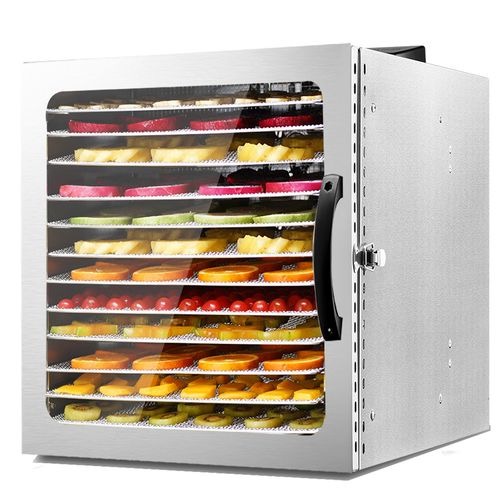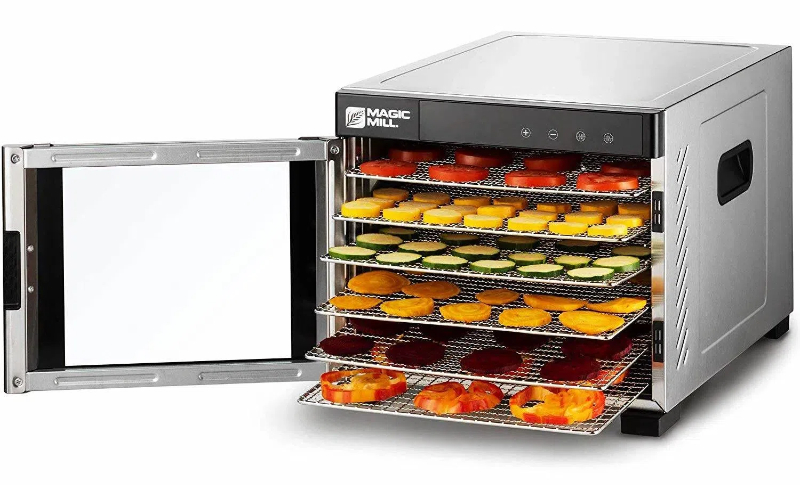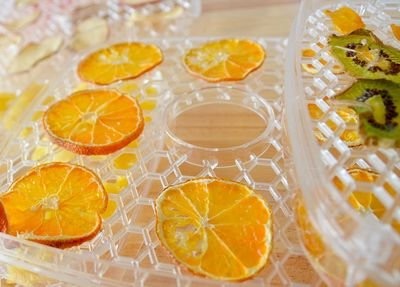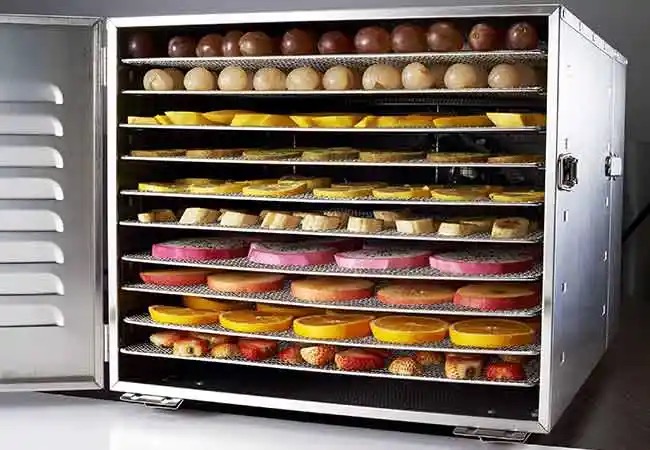
Content Menu
● Introduction
● Understanding Heat Pump Dryers
● Key Components of Heat Pump Dryers
● Standard Dimensions of Heat Pump Dryers
>> Height
>> Width
>> Depth
>> Weight
>> Tray Dimensions
● Applications of Heat Pump Dryers in Food Processing
>> Fruit Drying
>> Vegetable Drying
>> Herb Drying
>> Meat Drying
● Benefits of Using Heat Pump Dryers
>> Energy Efficiency
>> Environmentally Friendly
>> Consistent Drying Quality
>> Versatility
>> Reduced Operating Costs
● Conclusion
● Frequently Asked Questions
>> 1. What is the average drying time for food in a heat pump dryer?
>> 2. Can heat pump dryers be used for commercial applications?
>> 3. How do I maintain a heat pump dryer?
>> 4. What types of food can be dried using heat pump dryers?
>> 5. Are heat pump dryers noisy during operation?
Introduction
In the world of food processing, drying is a crucial step that helps preserve food, enhance flavors, and extend shelf life. As a leading manufacturer of food dryers in China, we specialize in providing OEM services to international brands, wholesalers, and producers. While our focus is on food drying machines, understanding the dimensions and specifications of heat pump dryers can provide valuable insights into the design and functionality of our products. This article will explore the standard dimensions of heat pump dryers, their applications in food processing, and the benefits they offer.

Understanding Heat Pump Dryers
Heat pump dryers are innovative appliances that utilize a heat pump system to dry food products efficiently. Unlike traditional dryers that expel hot air, heat pump dryers recycle air, making them more energy-efficient and environmentally friendly. They work by extracting moisture from the food and transferring it to a heat exchanger, where it is condensed and removed from the system.
Key Components of Heat Pump Dryers
1. Heat Exchanger: This component is responsible for transferring heat to the air used in the drying process. It plays a vital role in maintaining the desired temperature and humidity levels.
2. Compressor: The compressor circulates refrigerant through the system, allowing for the efficient transfer of heat.
3. Fan: The fan helps circulate air within the dryer, ensuring even drying of food products.
4. Control Panel: Modern heat pump dryers come equipped with digital control panels that allow users to set drying times, temperatures, and humidity levels.
Standard Dimensions of Heat Pump Dryers
When considering the purchase or design of a heat pump dryer, understanding its dimensions is essential. The standard dimensions can vary based on the model and manufacturer, but here are some general guidelines:
Height
The height of heat pump dryers typically ranges from 1.5 to 2 meters. This height allows for adequate airflow and ensures that the dryer can accommodate various food products.
Width
The width of heat pump dryers usually falls between 0.6 to 1 meter. A wider design can facilitate the drying of larger batches of food, making it suitable for commercial applications.
Depth
The depth of these dryers generally ranges from 0.6 to 1 meter. A deeper design can provide more space for food trays and enhance the drying capacity.
Weight
The weight of heat pump dryers can vary significantly based on their size and construction materials. On average, they weigh between 100 to 300 kilograms. This weight is an important consideration for installation and transportation.
Tray Dimensions
The trays used in heat pump dryers also have standard dimensions. Typically, they measure around 0.4 meters in width and 0.6 meters in length. The number of trays can vary, with some models accommodating up to 20 trays at once.

Applications of Heat Pump Dryers in Food Processing
Heat pump dryers are versatile machines that can be used for various food products, including fruits, vegetables, herbs, and meats. Here are some common applications:
Fruit Drying
Heat pump dryers are ideal for drying fruits such as apples, bananas, and berries. The controlled drying process helps retain the natural flavors and nutrients of the fruits. For instance, when drying apples, the heat pump dryer can maintain a consistent temperature that prevents browning and preserves the fruit's texture.
Vegetable Drying
Vegetables like carrots, tomatoes, and peppers can be effectively dried using heat pump technology. This method preserves the color and texture of the vegetables, making them suitable for long-term storage. The gentle drying process ensures that the nutritional value of the vegetables is maintained, which is crucial for health-conscious consumers.
Herb Drying
Herbs such as basil, oregano, and thyme benefit from the gentle drying process of heat pump dryers. This method ensures that the essential oils and flavors are preserved, resulting in high-quality dried herbs that are perfect for culinary use. The ability to control humidity levels allows for optimal drying conditions, which is essential for maintaining flavor.
Meat Drying
Heat pump dryers can also be used for drying meats, such as jerky. The low-temperature drying process helps eliminate moisture while maintaining the quality of the meat. This is particularly important for producing high-quality jerky that is safe for consumption and has a long shelf life.
Benefits of Using Heat Pump Dryers
Energy Efficiency
One of the most significant advantages of heat pump dryers is their energy efficiency. By recycling air and using lower temperatures, these dryers consume less energy compared to traditional drying methods. This not only reduces operational costs but also minimizes the environmental impact of food processing.
Environmentally Friendly
Heat pump dryers produce fewer emissions and have a lower carbon footprint, making them an environmentally friendly choice for food processing. The ability to operate without venting hot air outside means that they can be used in various settings without contributing to heat loss in the facility.
Consistent Drying Quality
The controlled drying environment of heat pump dryers ensures that food products are dried evenly, resulting in consistent quality and texture. This is particularly important for commercial food producers who need to meet strict quality standards.
Versatility
Heat pump dryers can be used for a wide range of food products, making them a versatile addition to any food processing facility. Whether drying fruits, vegetables, or meats, these machines can adapt to different drying needs, providing flexibility in production.
Reduced Operating Costs
The energy savings and efficiency of heat pump dryers can lead to reduced operating costs over time, making them a cost-effective solution for food manufacturers. Additionally, the durability and reliability of these machines mean that they require less frequent maintenance, further lowering costs.
Conclusion
Understanding the standard dimensions and specifications of heat pump dryers is essential for food manufacturers looking to invest in efficient drying technology. As a leading OEM provider of food drying machines, we are committed to delivering high-quality products that meet the needs of our clients. By choosing heat pump dryers, food processors can benefit from energy efficiency, consistent drying quality, and versatility in their operations.

Frequently Asked Questions
1. What is the average drying time for food in a heat pump dryer?
The drying time varies depending on the type of food and its moisture content, but it typically ranges from 6 to 12 hours.
2. Can heat pump dryers be used for commercial applications?
Yes, heat pump dryers are suitable for both commercial and residential applications, making them versatile for various food processing needs.
3. How do I maintain a heat pump dryer?
Regular maintenance includes cleaning the filters, checking the heat exchanger, and ensuring proper airflow around the unit.
4. What types of food can be dried using heat pump dryers?
Heat pump dryers can be used for fruits, vegetables, herbs, meats, and even flowers.
5. Are heat pump dryers noisy during operation?
Heat pump dryers are generally quieter than traditional dryers, making them suitable for use in various environments.












